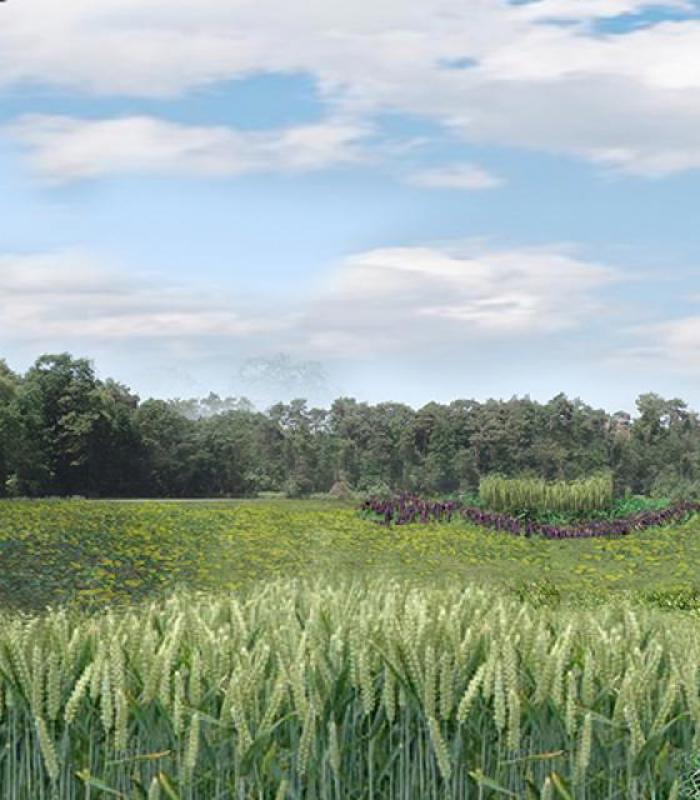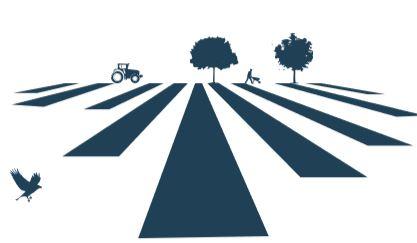Last summer, ‘De Natuurakker’ (The Nature Field) was one of the 16 winners of the ‘Brood en Spelen’ (panem et circenses) design award. Two students from HAS University of Applied Sciences carried out their final-year project as part of this initiative, which is aimed at combining developing nature and agricultural production. Over the second half of the year, all of the winners were given the opportunity to further expand and finetune their plans. To help them, they received €25.000, a coach appointed by the province and expert support. With no fewer than 95 submissions, the award is a significant achievement. The final-year project was supervised by lecturers Toine Buijs and Janneke Grauls as part of the lectureship in Innovative enterprise related to nature.
Farmland or nature reserve?
The project Natuurakker is a search for ways in which plots of land can be designed in such a way that nature can develop and profitable agricultural production can take place at the same time. “The design of the plot is based on a soil scan of the land,” explains Toine Buijs. “The wet and dry sections of the plot are then specifically used for crop production, either in strips of land or as a corridor from the natural surroundings.” Conventional, productive crops are cultivated that can be placed in long chains. The Natuurakker will be designed in such a way, that neither farmers nor ecologists are able to give it an exact definition. Passers-by will also wonder: is it farmland, or is it a nature reserve? And that is precisely the idea behind the initiative.
Strengthening each another
A conscious decision was made within the final-year project to select students from different study programmes: Lotte Embregts from Spatial & Environmental Planning (specialisation Landscape Design) and Susanne van Caam from Horticulture & Business Management. “We chose a designer and an HBM student,” Janneke Grauls explains. “A new combination. The collaboration was a really good challenge for the students: they learnt to look beyond their own horizon and to enhance the other person’s field of expertise.” Toine is also enthusiastic about Lotte and Susanne: “It was a very lucrative and intensive collaboration. Both students stepped out of their comfort zone and conducted constructive meetings from the perspective of their own discipline.” Janneke adds: “It was also an open assignment: the basis was the discussion of how farmland and nature can help one another, and what a long-term design that’s attractive throughout the year, should look like.”
High level
When the Top Project competition was announced, the project seemed to fit the criteria perfectly. “The quality of the participants was high with various top agencies also taking part,” says Janneke. “Lotte and Susanne were the only students involved. The two got on so well, that they were able to achieve many of their results with little supervision. The process went by itself. We’re really proud of this: it shows what HAS students are capable of. And they even managed to win! Lotte and Susanne have since graduated and, thanks to the competition, got the chance to work fulltime on the project for half a year.”
New location
The final-year project took place at the Herenboeren on a plot of land in Boxtel-North. For the next round of the competition, the project team is currently analysing a new location. HAS lecturer Joeri de Bekker is involved as landscape architect. The team is also receiving expert advice from Wageningen University. They are detailing aspects such as the history, water management, soil quality, flora and fauna, landscape characteristics and current value of the planned area. Based on this survey, the team will create a design plan for the plot of land. Key in the process is how to make the Natuurakker profitable, and how to market the concept.
About the Brood en spelen (panem et circenses) competition
The Brood en spelen competition takes place on the sandy soils of the Dutch provinces of North-Brabant, Gelderland and Overijssel. It is the idea of Floris Alkemade (Dutch Chief Government Architect) and Berno Strootman (National Advisor for the Countryside). They challenged farmers, land owners and architects to work together on drawing up radical, realistic and achievable proposals aimed at addressing the huge challenge facing the countryside. An important reason behind the decision to create no fewer than 16 winners who can then carry on their project, is to gain insight into the possibilities for innovating the countryside, but also into the obstructions that prevent innovation.


